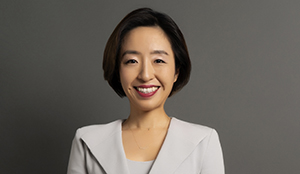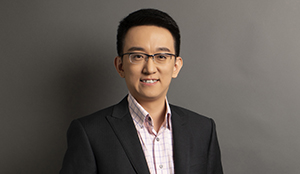Brand Protection and Frequently Asked Questions for Car Manufacturers
The automotive industry is a typical IP-intensive industry, with a well-defined and combined trademark system. However, the applicants may face many difficulties due to the characteristics of the industry. For example, problems relating to the lack of distinctiveness of the vehicle models, slogans and trademarks. At the same time, Internet of Things (IoT), automated driving/intelligent driving and "Internet+" are also bringing profound changes to the automotive industry.
Features of trademark rights of car manufacturers
The hierarchical character of trademark system is determined by the product lines of car manufacturers. Generally, the trademark system of a car manufacturer can be categorised as follows:
- Master label: such as “Toyota”, “BMW” and “BYD”. The master label is the most important asset of each company and is its best-known name. Therefore, most of the car manufacturers have extensive or even all-round protection for their master labels.
- Car brand: such as Toyota’s “Camry”, "Corolla", BYD's "Tang", "Song”, "Yuan", etc. Major manufacturers also have extensive or even all-round protection for their major car brands.
- Model brand: for example, the Lexus NX series SUVs are categorised into NX260, NX350h, etc, based on optional configuration. The model brand plays an important role in differentiating and guiding consumers in the process of sales, exhibition and purchasing.
Frequently Asked Questions about Trademark Applications for Car Manufacturers:
Distinctiveness of model brand
Under the Trademark Law and the Standards for Trademark Examination and Trial, and according to the current judicial opinions, consumers will not recognize a combination of letters and numbers in a common presentation as a trademark. Such marks make it difficult to distinguish the origin of the goods and therefore lack the distinctiveness required for trademark registration.
For example, the trademark applications in Class 12 for Audi's models A3, A4, A5, A6, A8, Q7, R8 and Q5L were all refused, and only a small number of trademarks for such models as A6L, A8L and "RS4" were registered. The Trademark Office and the courts also rejected the applications for "A110" (No. G1332337) of Renault, "ix25" (No. 23295824) of Hyundai, "G350" (No. G812209) and "CLS450" (No. G1244411) of Daimler on the same grounds.
To avoid these situations, the applicant may consider the following strategies:
1. Application for a trademark which combines the master label, car brand and model brand
Some manufacturers have already adopted this strategy. For example, the "LEXUS + Model Brand" series of trademark applications for Toyota's Lexus vehicles (such as LEXUS LS350, LEXUS LC500h, etc.) have been successfully registered in Class 12.
2. Enhanced distinctiveness of the model brand through widespread use and trademark enforcement
When separate protection is desired for a model brand, the manufacturer may consider strengthening the use of such model brand as a trademark in preparation for future registration:
- to have a trademark clearance search conducted to ensure that the model brand has no direct conflict with others' prior marks and reduce the risk of infringement;
- to use the symbol "TM" with the trademark or include "Trademark Footnotes" in promotional materials to clearly confirm that the model brand is being used as a trademark and avoid confusion or misunderstanding among the relevant public;
- to enhance visual distinctiveness with stylized design of model brand;
- to actively conduct trademark enforcement through trademark watching to prevent any use of identical or similar marks and prevent the dilution of trademark distinctiveness.
Distinctiveness of advertising slogan
Advertising slogan is an effective means for businesses to communicate their brand ideas. In the face of fierce competition, car manufacturers always use impressive advertising slogans to stand out from the competitors.
However, under the Trademark Law and the Standards for Trademark Examination and Trial, and according to the current judicial opinions, trademark applications that contain only common advertising language and lack other distinctive elements shall be refused. For example, Jaguar Land Rover Ltd. recently filed applications for registration of trademarks containing only common advertising slogans, such as No. 34330865 "NEVER STOP DISCOVERING”, No. 34324229 "发现无止境" (in English: NEVER STOP DISCOVERING) and No. 27709482 "心所向驰以恒" (in English: DRIVEN BY HEART FOREVER). These applications were found to be in lack of distinctiveness during the course of administrative and judicial review, which made it difficult to be recognized by consumers as trademarks, and therefore were refused.
To avoid these situations, the applicant may consider the following strategies:
- to file an application for trademark which combines the master label, car brand and advertising slogans to satisfy the requirement for distinctiveness of the trademark as a whole;
- to have a trademark clearance search conducted to ensure that the slogan has no direct conflict with others' prior slogans and marks and reduce the risk of infringement;
- to actively conduct the trademark enforcement through trademark watching to prevent any use of identical and similar slogans.
Expansion of Trademark Applications for Car Manufacturers:
Trademark applications filed by car manufacturers conventionally focus on the automotive product itself, including the vehicle, parts, engines, lubricants and car decorations as well as related maintenance services. Some manufacturers expanded their business to automotive peripheral products or co-branded products with other manufacturers, such as bicycles, clothing, shoes and hats, and model car toys. Most companies' existing trademark registrations usually cover these items of goods and services.
Meanwhile, as new technologies such as renewable energy, smart driving, automatic driving, big data and the IoT are widely used, car manufacturers are increasingly using digital and intelligent information and communication technologies in automotive products and services. Toyota has started providing comprehensive automotive system solutions by using the next-generation information and communication technologies, including data collection, analysis and processing of vehicle information by connecting mobile terminals to in-vehicle terminals, and effectively connecting car owners, dealers and manufacturers through Apps or public platform systems, to improve product and service quality. As the purpose of car driving are slowly shifting from pursuing "a convenient travel" to "a convenient life", new technologies such as automation, face recognition, AR/VR and voice interaction are being more widely applied to automotive products and related services to enhance the convenience that cars bring to life.
As a result, conventional trademark applications of car manufacturers are no longer able to cover new technologies, products and services in the industry. To address this issue, trademark registrations should be filed as early as possible for the goods and services which are related to emerging technologies, especially those related to the information and communication fields. It is particularly important for companies to apply for registration of their core trademarks in order to avoid dilution or cybersquatting of such core trademarks in the emerging fields. For certain new products and services that do not currrently have corresponding product/service categories such as "automatic taxi service", companies may apply for trademarks in relevant product/service categories to avoid any registration obstacle set up by forerunners in future registrations.




